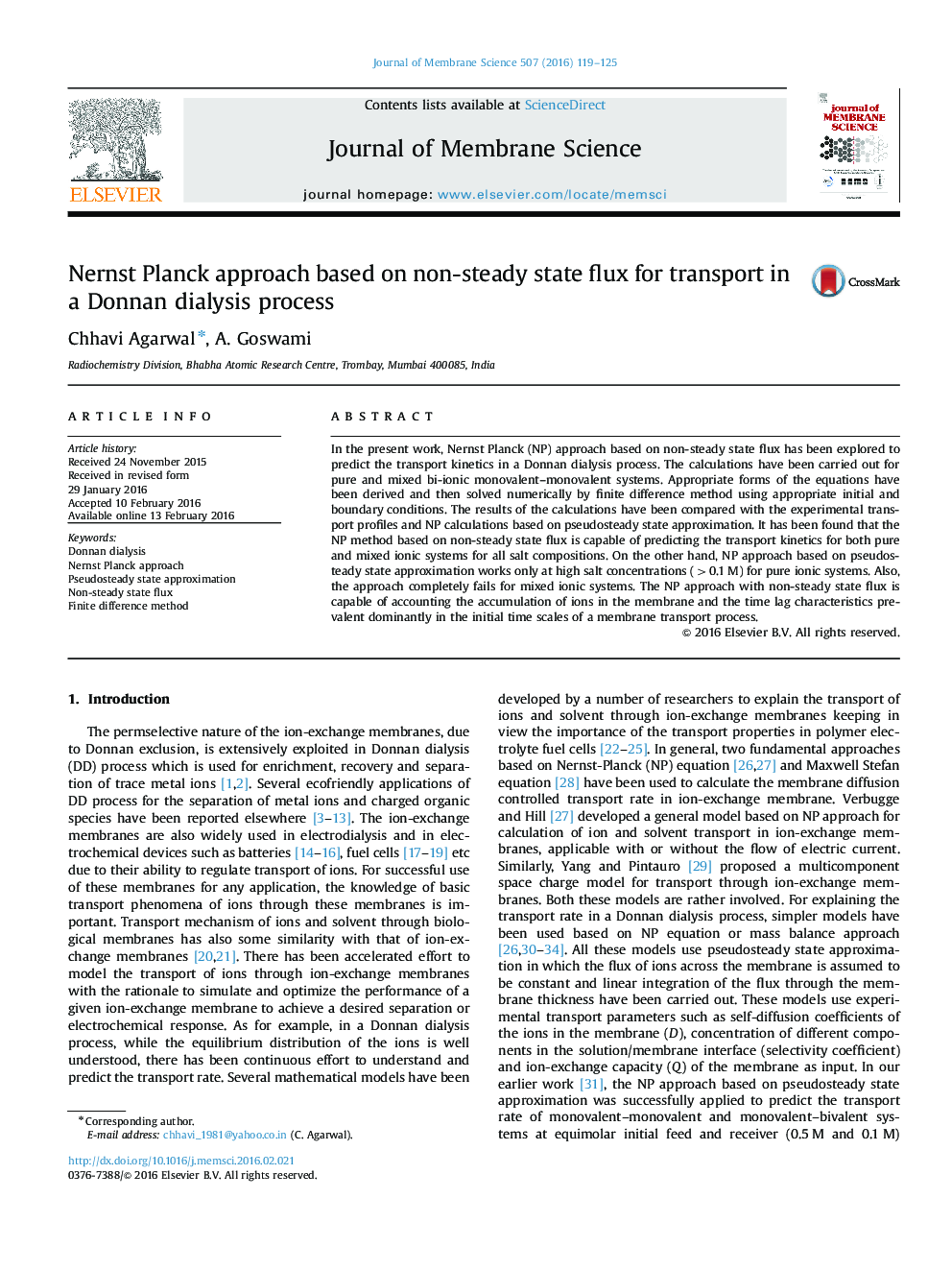| Article ID | Journal | Published Year | Pages | File Type |
|---|---|---|---|---|
| 632521 | Journal of Membrane Science | 2016 | 7 Pages |
•Non-steady state flux NP approach explored to predict kinetics in Donnan dialysis.•Results compared with measured transport profiles and pseudosteady state calculation.•Pseudosteady state approximation fails for low salt concentration and mixed systems.•NP approach with non-steady state flux accounts for accumulation of ions in membrane.•Approach takes care of time lag characteristics prevalent in initial time scales.
In the present work, Nernst Planck (NP) approach based on non-steady state flux has been explored to predict the transport kinetics in a Donnan dialysis process. The calculations have been carried out for pure and mixed bi-ionic monovalent–monovalent systems. Appropriate forms of the equations have been derived and then solved numerically by finite difference method using appropriate initial and boundary conditions. The results of the calculations have been compared with the experimental transport profiles and NP calculations based on pseudosteady state approximation. It has been found that the NP method based on non-steady state flux is capable of predicting the transport kinetics for both pure and mixed ionic systems for all salt compositions. On the other hand, NP approach based on pseudosteady state approximation works only at high salt concentrations (>0.1 M) for pure ionic systems. Also, the approach completely fails for mixed ionic systems. The NP approach with non-steady state flux is capable of accounting the accumulation of ions in the membrane and the time lag characteristics prevalent dominantly in the initial time scales of a membrane transport process.
Graphical abstractFigure optionsDownload full-size imageDownload high-quality image (194 K)Download as PowerPoint slide
